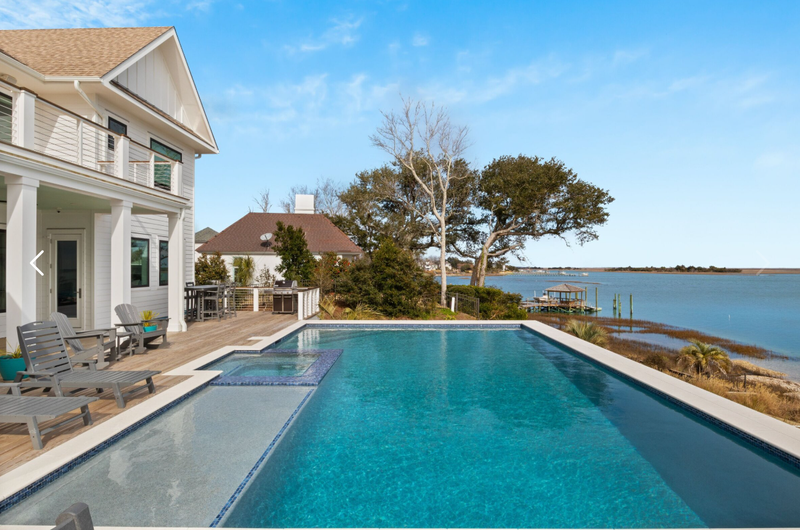Coastal homes offer unmatched beauty and a connection to the water that few other properties can provide. Yet with rising sea levels and stronger storm systems affecting many shorefront communities, homeowners must think strategically about how to protect their properties for the long term. Designing, remodeling, or maintaining coastal homes requires more than visual appeal. It involves thoughtful planning, durable materials, and construction practices that anticipate the unique challenges of waterfront living.
Why Rising Sea Levels Matter for Coastal Homes
Climate data shows that sea levels have steadily risen over the last century, with the pace accelerating in recent decades. For coastal homes, this means increased risk of flooding, saltwater intrusion, and structural damage. Homes near the shoreline that once sat on high ground are now closer to risk zones. While this shift does not mean coastal living is off the table, it emphasizes the importance of proactive planning and resilient design.
Building Elevated Foundations for Coastal Homes
One of the most effective ways to adapt coastal homes to changing sea levels is through elevated foundations. Raising a home on piers or pilings can protect the structure from storm surges and tidal flooding.
In some areas, building codes now require elevated designs, but even where not mandated, they add peace of mind. A higher foundation also allows homeowners to preserve their investment, safeguard valuables, and maintain insurance eligibility.

Choosing the Right Materials for Durability
Salt air, humidity, and frequent storms demand careful material selection. Coastal homes benefit from materials that resist rot, corrosion, and warping. Fiber cement siding, treated lumber, stainless steel fixtures, and impact-resistant windows are all common choices.
Roofing materials such as metal or composite shingles also stand up better to coastal conditions. Choosing durable finishes may require a larger upfront investment, but it often saves homeowners significant costs in maintenance and replacement down the road.
Storm Protection Features That Work
In areas where storms bring high winds and heavy rainfall, storm protection should be an essential part of the design. Reinforced windows, hurricane shutters, and storm doors add crucial layers of defense.
Whole-house generators can keep essential systems running during outages, and smart drainage systems prevent standing water from damaging landscaping or foundations. Many coastal homes also integrate storm protection systems during renovations, ensuring that older homes stay as secure as newly built ones.
The Role of Property Management in Coastal Homes
For many waterfront homeowners, vacation properties remain unoccupied for much of the year. Property management services can provide critical oversight during these times. Regular inspections, maintenance, and storm preparation help ensure that the home remains safe and functional even when the owners are away.
Services may include securing outdoor furniture, monitoring sump pumps, trimming trees to reduce storm hazards, and performing post-storm evaluations. Having a professional team in place allows homeowners to enjoy their property without constant worry.
Landscaping and Site Planning for Flood Mitigation
The land surrounding coastal homes plays a major role in managing rising water levels. Site planning can include grading the property to direct water away from the house, using permeable surfaces to improve drainage, and planting vegetation that stabilizes soil.
Proper landscaping not only enhances curb appeal but also works as a natural barrier against erosion and runoff. These measures add another level of resilience to coastal living.
Insurance and Financial Planning for Coastal Homes
While physical design is the first line of defense, homeowners should also consider the financial implications of living by the water. Insurance premiums for coastal homes often reflect the higher risks associated with storms and flooding. However, homes with elevated foundations, storm-resistant features, and proven maintenance records can sometimes qualify for reduced rates.
Working with contractors who understand coastal construction also ensures compliance with building codes that insurers recognize, which can make coverage more affordable in the long term.

Designing Coastal Homes with Flexibility in Mind
Another way to prepare for rising sea levels is to think beyond immediate needs. Flexible design allows homeowners to make adjustments as conditions change. This can mean designing spaces that can be converted into safe storage, adding reinforced rooms for protection during severe weather, or leaving room for future expansion of storm protection features.
Coastal homes that are built with adaptability in mind hold their value better and provide peace of mind for families who want to enjoy the waterfront lifestyle without worry.
The Importance of Community Planning in Coastal Areas
Coastal homes are rarely affected in isolation. Neighborhood planning, shared drainage systems, and community-level storm barriers all influence how individual homes perform in the face of rising water.
Homeowners benefit from being active in local planning initiatives, ensuring that their investment aligns with broader resilience efforts. Choosing a contractor who is experienced in working with local regulations and community planning can make this process smoother and more effective.
Building Confidence in Coastal Living
Coastal homes remain one of the most rewarding types of properties to own, offering both lifestyle benefits and strong market appeal. Yet with rising sea levels, homeowners need to approach construction and remodeling with foresight. Elevated designs, durable materials, storm protection, property management, and smart financial planning all contribute to making coastal living both safe and sustainable.
At Konrady & Son Construction, we build and remodel homes that balance beauty with long-lasting security. Our team specializes in coastal properties and understands the unique requirements of building in waterfront environments. Whether it is a new custom home, a renovation, or property management, we help homeowners create spaces designed to withstand the challenges of today and tomorrow. Contact us today.
Leave a Reply Cancel reply
site design
Monday - Friday
8:00 AM- 5:00 PM
435 Eastwood Rd
Wilmington, NC 28403